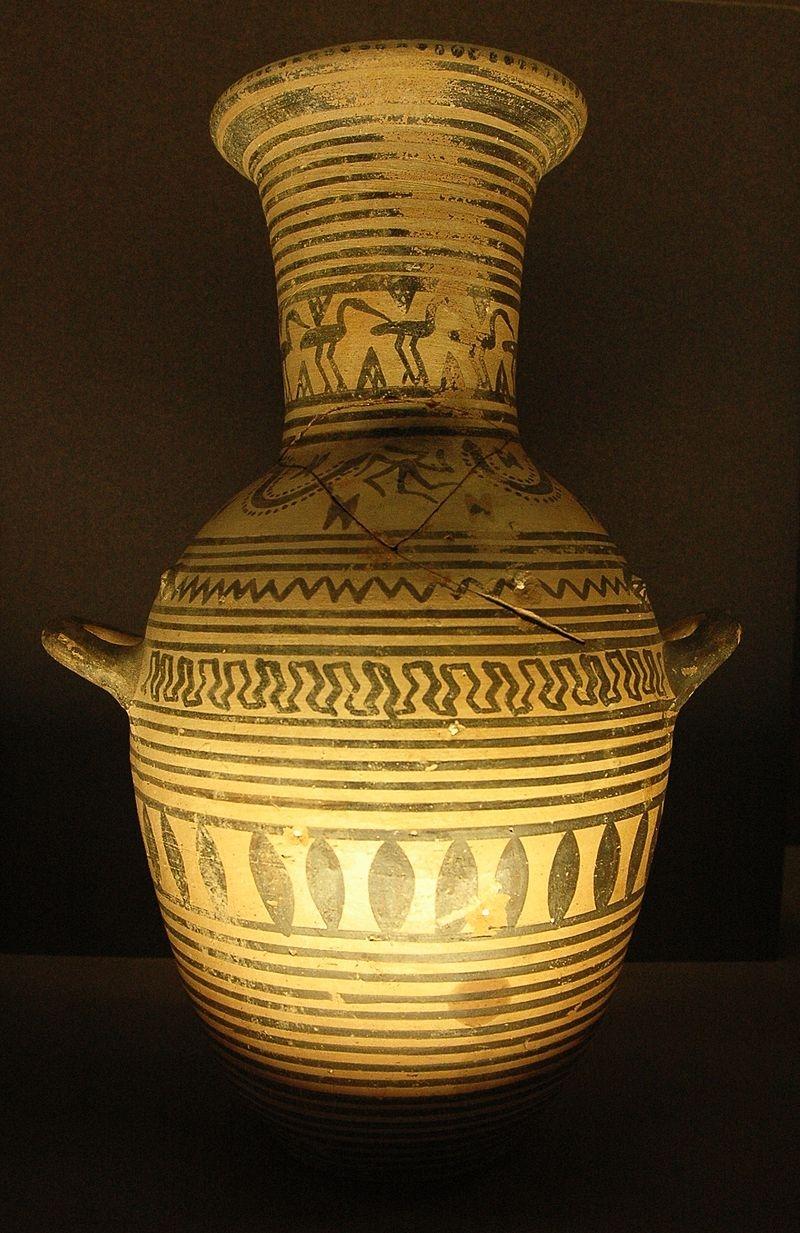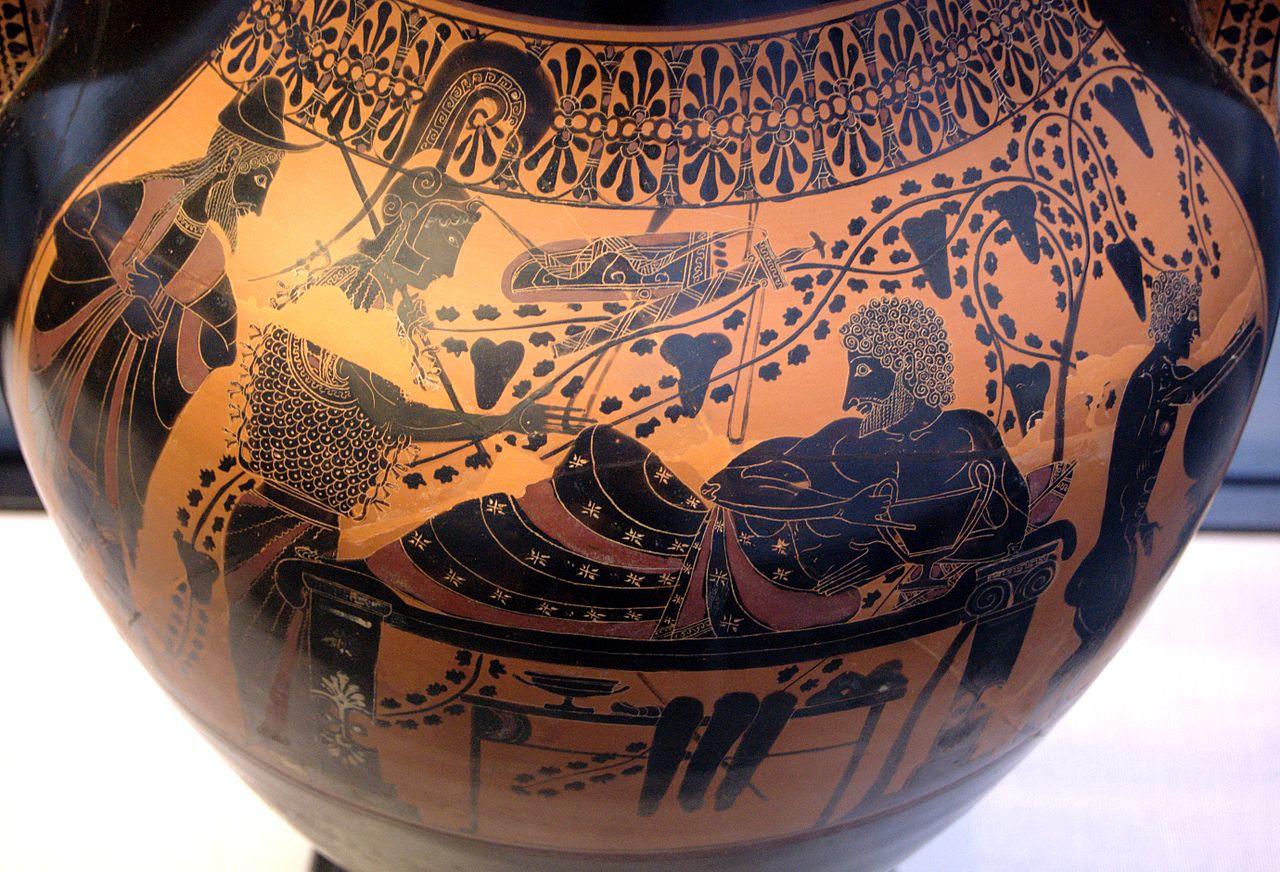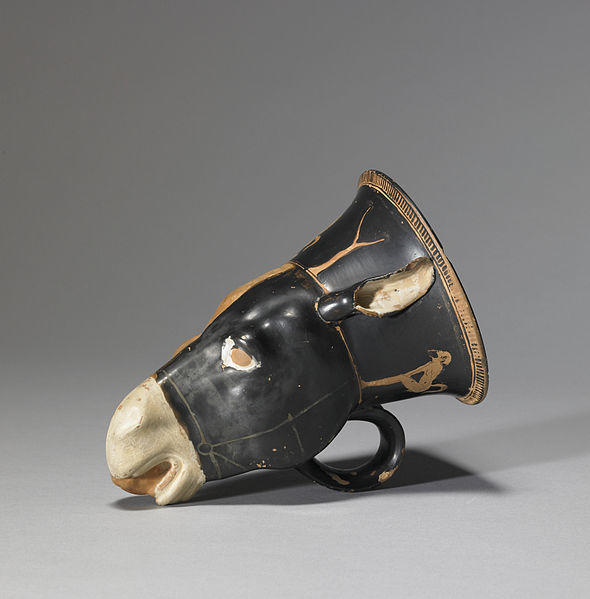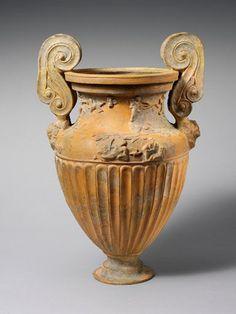Introduction
Greek art has evolved for more than 2,000 years with most of its traces found in pottery. However, a large part of the history related to Greek pottery began emerging after the dark period. Some of the major periods, which are visible from the Greek art during the time, include geometry, archaic, classical, and Hellenistic. All the aforementioned periods have distinct features that make them unique from one another. In effect, the periods represent transitions from simple pottery to periods when it became complex and more sophisticated. To understand the issue of Greek art especially in pottery, I selected four objects from the Metropolitan Museum of Art located in New York. The objects, mainly pots, represent various stages of Greek art and are useful in unearthing the subtle features that distinguish one period from the other. It is within this context that the essay discusses the various periods of Greek art and examines the Greek objects found in the Metropolitan Museum of Art in New York.
Periods of Greek Pottery and Objects
Geometric Period
Remarkably, the geometric period in Greek art commenced right after the dark period. According to Boardman, the geometric period extended from 900 BC to 700 BC before the succession of the archaic period (81). As the name depicts, the geometric period is a stage when vases had designs that adopted geometric orientations. Wavy lines, triangles, rectangles, and circles are some of the dominant features associated with the period. In as much as human and animal drawings could be witnessed in some cases, the images still depicted sharp shapes compounding the fact that the majority of the art at the time was inspired by geometry. In the Metropolitan Museum of Art, various pots have designs that compound the period when Greeks practiced the skill of geometry. It is important to explain that the analysis of pottery when studying the periods of art in Greek takes effect because the majority of the artwork in Greek was done on these vases.
One of the vases that depict the geometric period in Greek art is the Boeotian Geometric Hydria lamp, Louvre. From the vase, geometric drawings such as straight and zigzag lines, as well as oval circles, are visible. Moreover, the animals drawn on the neck of the vase follow a geometric format. The presence of the drawings and animals, which have diagrammatic formats, substantiates the fact that the vase was designed during the period. In the assertion of Osborne, several pots designed during the geometric period have circles, wavy lines, triangles, and images that have sharp ends (124). Moreover, a close look at the vase reveals that the drawings are simply indicating that the designs materialized when Greek pottery was emerging from the dark period.

Archaic Period
Soon after the geometric period, pottery became more sophisticated and involved the use of more tools in drawing and design. The period between 700 BC and 480 BC when human and animal images on vases became more visible and clear is what several scholars refer to as Archaic (Woodford 58). It is during the archaic period when the images could appear as if they are smiling back at the holder of the vase. Moreover, the images followed an advanced design than the previous periods were the ends and sides were sharp. In the archaic vases, images had fine ends and were easily identifiable. Moreover, due to the advanced quality of these drawings, several designers started incorporating images in their pots. Looking at the pots designed at the period in the Metropolitan Museum of Art in New York, one can realize that art borrows some aspects from the Egyptian culture. Elements that are visible on the feet of the vases are similar to those practiced by the Egyptian pot designers. However, the larger parts of the pots utilize aspects of Greek art.
One of the outstanding features that make the period different from the rest is the emergence of black and red figures. Gradually the designers of the pots started drawing images on red or black backgrounds. Initially, a black background was useful in creating some contrast so that the images appeared in the foreground. Consequently, the red background later succeeded in the black-figure. Rice notes that using the red-figure that is usually the clay’s original color, designers drew their images using different colors (82). Therefore, several objects developed at the time have backgrounds that may be red or black depending on the time of the design or the preference of the person developing the piece of pottery.
The image below is the side of Heracles and Athena vase that demonstrates Greek art during the archaic period. From the image, it is clear that symbols such as circles, triangles, rectangles, and images are more advanced. A look at the images evidences the development from the previous period. One can see the faces of people and distinguish them easily. Moreover, the pot has drawings of people seen wearing hats and stretching their hands. It is also evident that the background used is black, which contrasts with the images drawn on the belly of the pot, a clear indication that the art is archaic and follows a black-figure design.

Classical Period
During the classical period, pottery development in Greece went a notch higher as compared to those depicted by archaic models. The period also witnessed a shift from pottery to the development of sculptures. At the time, pottery was advanced and the level of innovation in the region was high as compared to other parts of the world and other stages of pottery development. Vases modeled during the classical period could adopt unique shapes different from the traditional geometric and archaic designs. It is worthwhile to elucidate that while the scale of sophistication among the Greeks in the classical era was high and pronounced, it still borrowed some aspects from the previous periods (Dupont 105). A study of the vases found in the Metropolitan Museum of Art linked to the period reveals that lines, circles, and other symbols played a role in their development. Additionally, the use of images like that evidenced by the archaic designers is also present in the pots that emerged at the time.
The image below belongs to one of the objects designed during the classical era. It is evident from the image that while the designer’s primary purpose is to make a vase, the level of innovation is high leading to a resultant image. The image achieved out of creativity looks like a small calf complete with color and a unique design that helps the audience to identify the resultant design. It is also clear that the designer used black background borrowed from the archaic expertise to ensure that aspects such as the ears, eyes, mouth, and nose become visible. It is lucid from the image that the level of expertise and innovation is exceptional.

Hellenistic Period
Hellenistic period signifies a time when the development of vases declined and aspects such as red and black-figure disappeared. According to Rotroff, the Hellenistic period materialized when the reign of Alexander the Great ended (180). Notably, the period is symbolic in that it opened the artistic features to the outside world other than Greek. Due to the opening up of other regions, new styles such as centuries ware and west slope ware appeared. Moreover, inscriptions that mimicked modern trademarks began emerging in various parts of the world.
Some of the vases associated with the Hellenistic period include the Terracotta Hadra Hydria water jar. The jar contains modern aspects and incursions that reflect the developments introduced by Hellenistic modifications. It is notable from the vase that features such red and black backgrounds are no longer pronounced. Also, the use of drawings and designs is not practical on the sides of the jar. The components that are visible from the jar include superb work of art demonstrated by the wonderful design of the handles.

Conclusion
Greek pottery has a rich history, which traces back to vases that had simple designs of symbols and images. The evolution saw a transition to more advanced stages where the pots had resultant images marking the highest levels of innovation as compared to the other periods. The Metropolitan Museum of Art in New York has several pieces of pottery that are useful in understanding the differences among pots designed by the Greeks during various periods of their history. The features help in distinguishing pots designed during geometric, archaic, classical, as well as Hellenistic periods.
Works Cited
Boardman, John. Greek Art (Fifth) (World of Art). Thames and Hudson, 2016.
Dupont, Pierre. “Pottery Manufacture in the Straits during the Greek Period: Present State of Research.” Dialogues d’Histoire Ancienne, vol. 1, no. 1, 2016, pp. 97-108.
Osborne, Robin. The Transformation of Athens: Painted Pottery and the Creation of Classical Greece. Princeton University Press, 2018.
Rice, Prudence. Pottery Analysis: A Sourcebook. University of Chicago Press, 2015.
Rotroff, Susan. “The Athenian kitchen from the Early Iron Age to the Hellenistic period.” Ceramics, Cuisine and Culture: The Archaeology and Science of Kitchen Pottery in the Ancient Mediterranean World, vol. 1, no. 1, 2015, pp. 180-253.
Woodford, Susan. An Introduction to Greek Art: Sculpture and Vase Painting in the Archaic and Classical Periods. Bloomsbury Publishing, 2015.